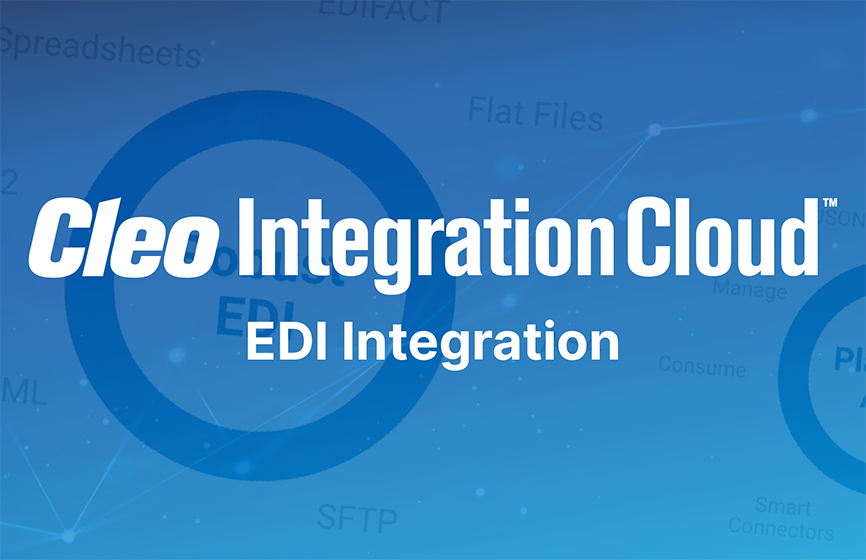Transportation Carrier Shipment Status Message
Learn about EDI 214s by reading the guide below. If you need to send or receive EDI 214s, contact our team today.
EDI 214
What is an EDI 214?
The EDI 214 is an electronic data interchange document sent by a transportation carrier, like a trucking or third-party logistics provider (3PL), to inform a shipper, consignee, or another relevant party about the current status and details of a shipment.
How is an EDI 214 Used?
Let's say you run ABC Electronics and you've just shipped a batch of electronic devices through XYZ Carriers. Here's how Electronic Data Interchange (EDI) documents work in your supply chain:
204 | 990 | 214 | 210
1. Sending a Shipment Request:
Before shipping, you use an EDI 204 to tell XYZ Carriers you need their transportation services. You provide details like the goods, pickup location, and delivery destination.
2. Getting a Response:
XYZ Carriers reply with an EDI 990 to confirm they received your request and either accept or decline the shipment. If accepted, it confirms the details and outlines the agreed-upon terms.
3. Tracking the Shipment:
As your goods are on the move, XYZ Carriers keep you updated using an EDI 214. This document provides real-time information on when the shipment was picked up, its current location, and the expected time of delivery.
4. Receiving the Invoice:
After your goods are delivered, XYZ Carriers send you an EDI 210 invoice detailing the charges. It includes information on weight, distance traveled, and any additional fees.
The EDI 214 document contains essential information about the shipment, and it should include the following details:
Purchase Order number
Contact information for the shipper, carrier, and receiver
Shipment specifics, such as product details, packaging information, and load details
Pickup and destination addresses
Route information for the shipment
Expected delivery time or ETA
Proof of delivery, if applicable


Benefits of the EDI 214 (Shippers & Carriers)
EDI 214 brings important advantages for both shippers and carriers. For shippers, it helps double-check details on 210 invoices before paying, making sure everything adds up correctly. Shippers also use the EDI 214 to assess carrier performance. For instance, if a carrier frequently arrives later than the originally scheduled date, the shipper may want to select a different carrier to meet a buyer's deadline.
Carriers, on the flip side, use EDI 214 to prove they're consistency in performance throughout the shipping and delivery process. When they provide accurate numbers in the EDI 214 documents, it helps avoid mistakes in invoices. This smoothens the payment process, allowing carriers to get paid quickly. So, EDI 214 isn't just about paperwork; it's a tool for accuracy and efficiency in the shipping and payment processes.
EDI 214 Specification
This X12 Transaction Set contains the format and establishes the data contents of the Transportation Carrier Shipment Status Message Transaction Set (214) for use within the context of an Electronic Data Interchange (EDI) environment. This transaction set can be used by a transportation carrier to provide shippers, consignees, and their agents with the status of shipments in terms of dates, times, locations, route, identifying numbers, and conveyance.
Sources
Accredited Standards Committee X12. ASC X12 Standard [Table Data]. Data Interchange Standards Association, Inc., Falls Church, VA. https://x12.org/index.php/products/transaction-sets
EDI 214 Source Format Example
ST*214*925090001~
B2**TRCR**IS1075661**PP~
B2A*01*LT~
NTE**DRIVER ARRIVE BY NOON~
N1*BT*Peco Pallet*93*PECOPALLET~
N3*2 Bridge Street, Suite 210~
N4*Irvington*NY*10533*USA~
S5*1*CL~
L11*R1024266*BM*BOL~
L11*FLATBED*EQ*Equipment Type~
L11*LIVE 4-29-20*SI*Shipper Ref No~
L11*LIVE 4-29-20*CB*Carrier BOL~
L11*TRCR*CR*SCAC~
G62*37*20200429*I*0700~
G62*38*20200429*K*1200~
AT8*G*L*37260**540~
N1*SH*Rite Aid-Woodland, CA (DC #81)*93*50086~
N3*1755 East Beamer Street~
N4*Woodland*CA*95776*USA~
L5**MIXED - UNSORTED****R1024266*SI~
AT8*G*L*37260**540~
S5*2*CU~
L11*R1024266*BM*BOL~
L11*FLATBED*EQ*Equipment Type~
L11*LIVE 4-29-20*SI*Shipper Ref No~
L11*LIVE 4-29-20*CB*Carrier BOL~
L11*TRCR*CR*SCAC~
G62*53*20200429*G*0600~
G62*54*20200429*L*1500~
AT8*G*L*37260**540~
N1*CN*Western Pallet Supply & Logistics LLC*93*45195~
N3*7675 West 11th Street~
N4*Tracy*CA*95304*USA~
G61*IC*Nicole*TE*209-836-1968 ext. 102~
L5**MIXED - UNSORTED****R1024266*SI~
AT8*G*L*37260**540~
L3*37260*G*513.86*FR*51386******540~
SE*38*925090001~

Automate EDI / API Transactions
Eliminate manual integration flows by automating and orchestrating EDI and API-based transactions in an intuitive self-service, low-code development environment.
Not ready for self-service? Leverage Cleo’s Managed Services team to get you up and running.
Keep a list of all X12 EDI transaction sets at hand.
Access a free EDI Transaction Set Guide
More EDI Resources
Explore additional EDI resources to deepen your understanding and enhance your proficiency in Electronic Data Interchange.


